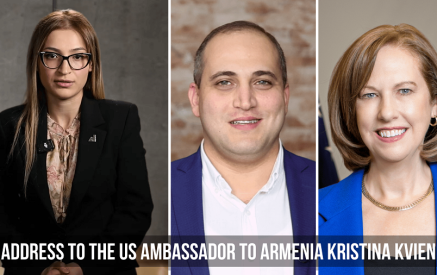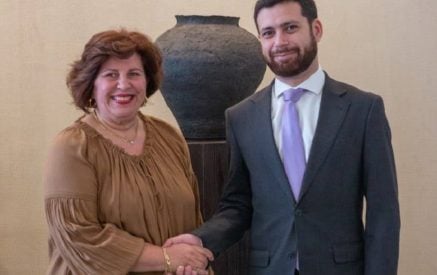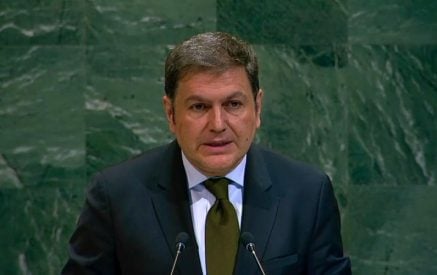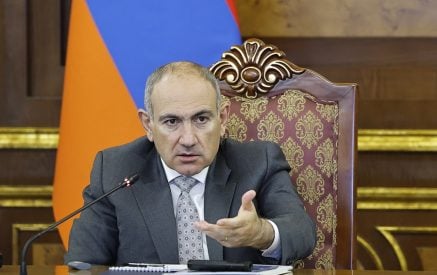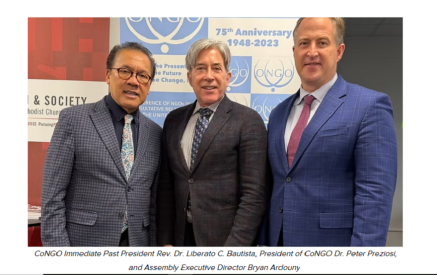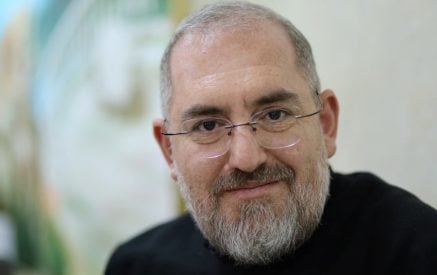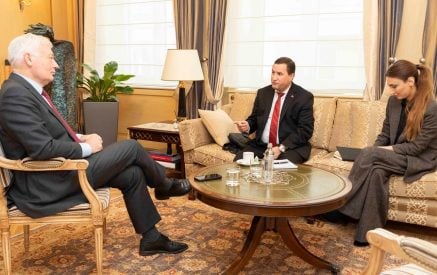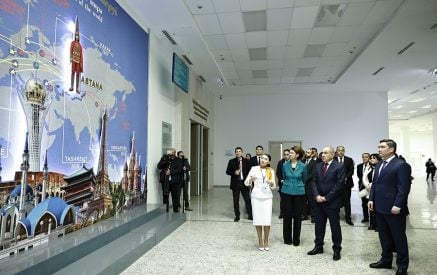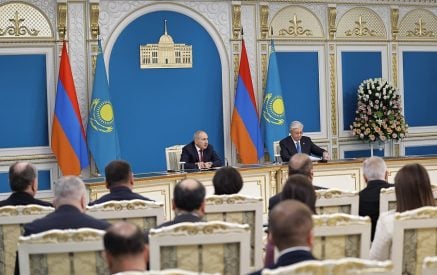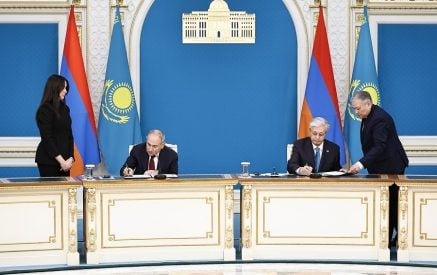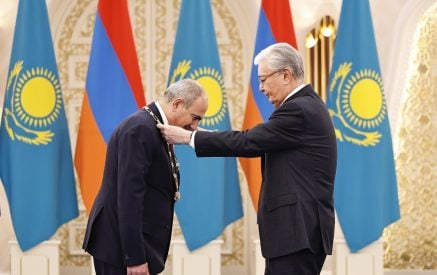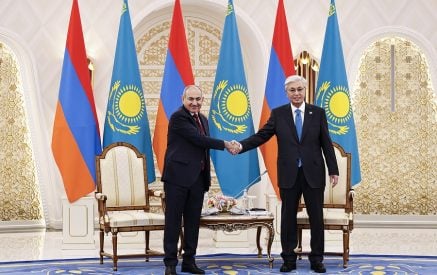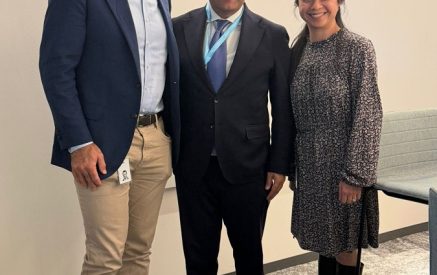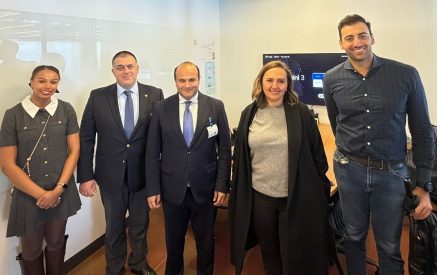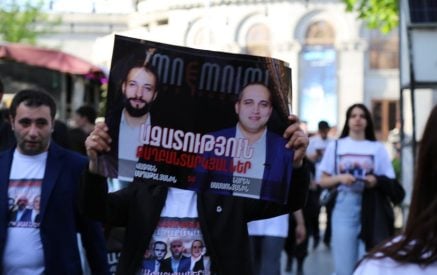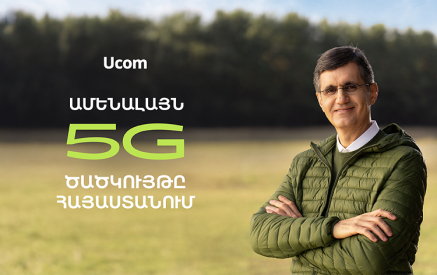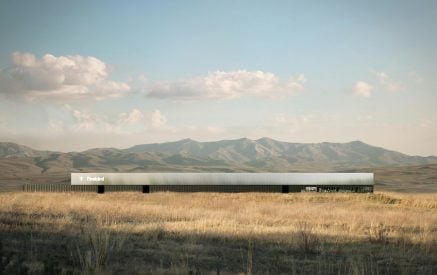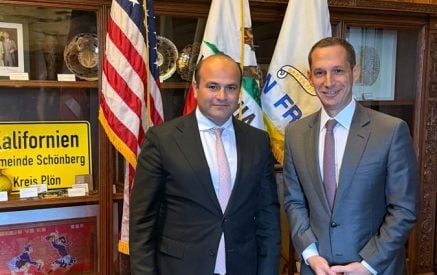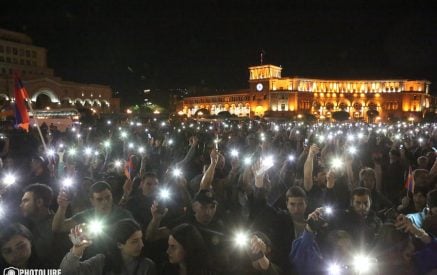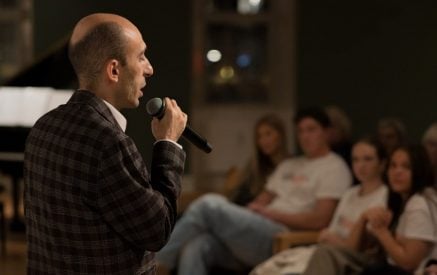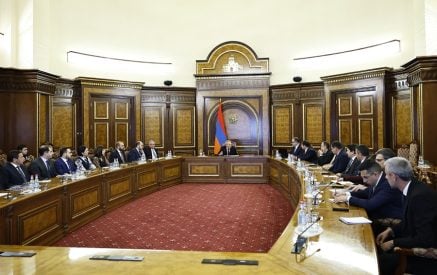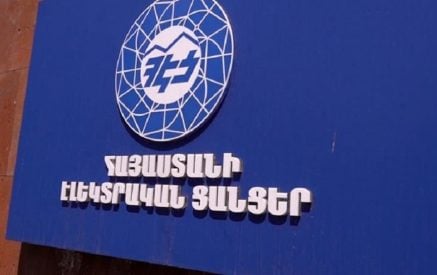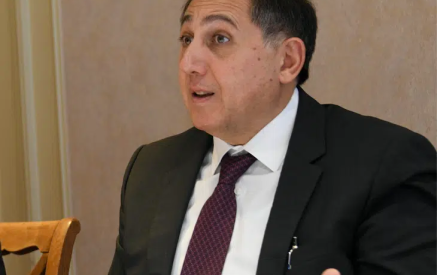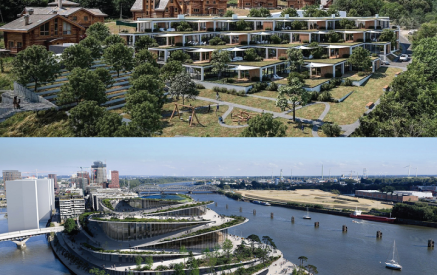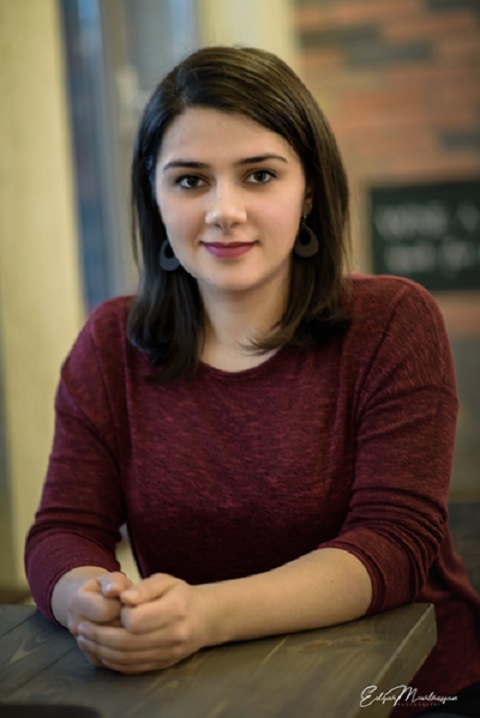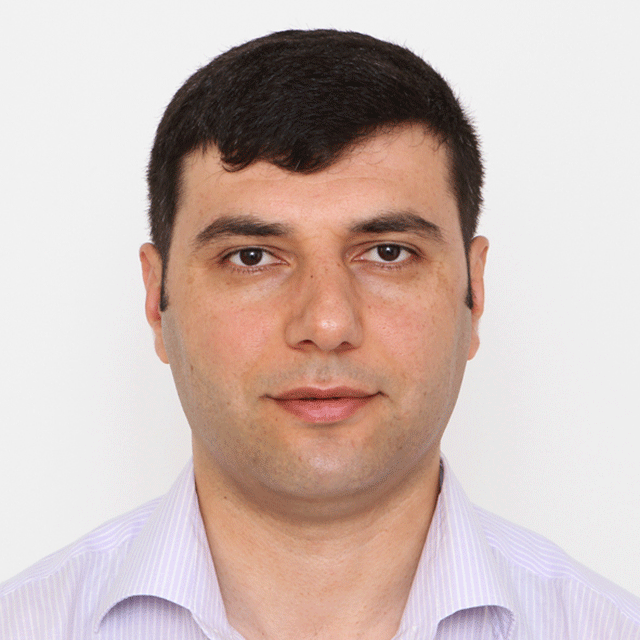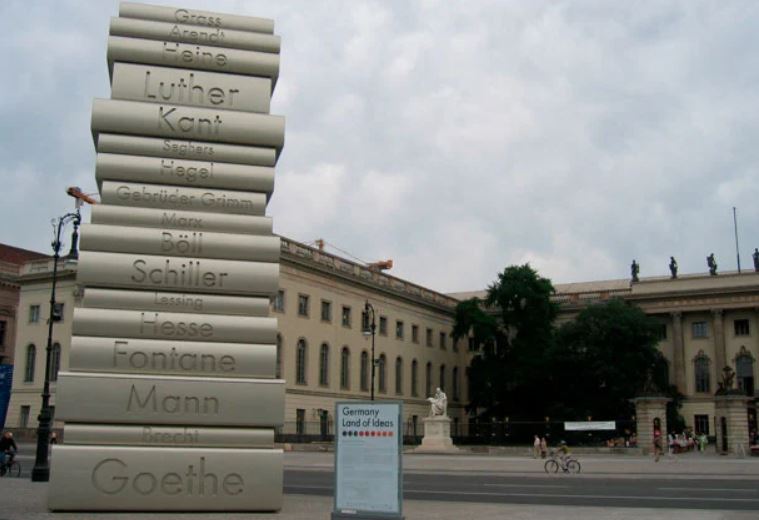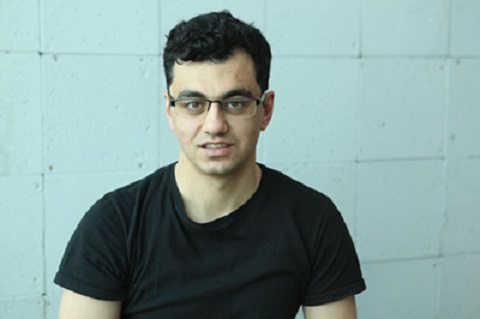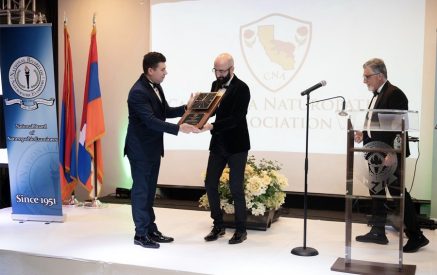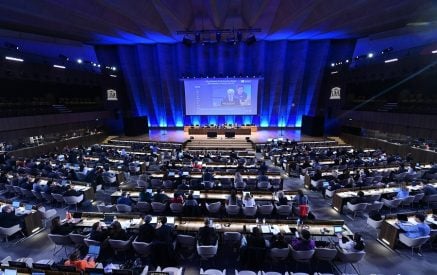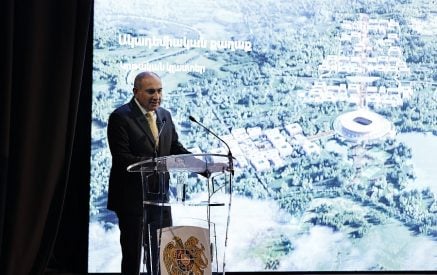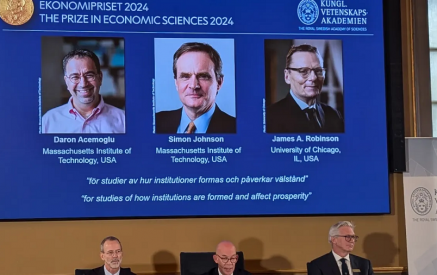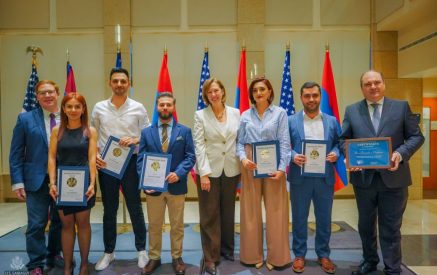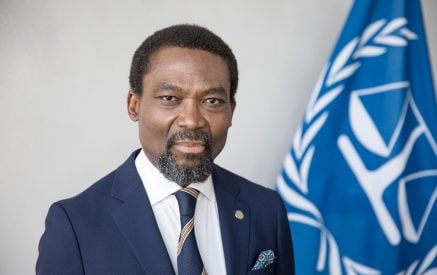Three young scientists and entrepreneurs involved with a new effort called Gituzh (Power of Science), raised the alarm in recent interviews, saying that close to half the scientists in the country are heading toward retirement age. In addition, between advanced age and emigration, the country is facing the very real threat of having very few researchers in the coming years, no higher scientific institutions and all of these could translate into the demise of the country itself.
Gituzh is lobbying for an increase in government support for science and research. To a certain extent, their very insistent demands for more attention and funds for the sciences in Armenia, has already worked as the government last month announced an increase in funding.
Read also
Hripsime Mkrtchyan, who is in the Boston area as for a year-long post-doctoral Fulbright Fellowship at MIT, the Aram Jivanyan, and Tigran Shahverdyan, did not mince words to describe the plight of Armenia in the very near future if Armenia does not put more stock in science and research. And they noted that the diaspora can have a positive impact on this change of course.
“Because of the absence of strong scientific infrastructure we have faced lots of problems during past months,” said Mkrtchyan, referring to the devastating war, for which Armenia was woefully underprepared technologically.
Added Shahverdyan, “We have a huge number of scientists in the Spyurk that can advise, remotely lead or co-lead a scientific team in Armenia or repatriate to Armenia and do what they are best at – science. Facilitating these processes should be one of the main components of the strategic solution we are talking about. Fixing the commitment in the law will send a strong signal to the scientists and other professionals in the Spyurk that Armenia is taking a progressive and ambitious route, and talent in Diaspora will start planning and exploring how they can be much more involved in this future.”
Mkrtchyan received her PhD from the Alikhanyan National Science Laboratory, affiliated with Yerevan State University, while doing her research at the Cosmic Ray Division of the Yerevan Physics Institute, perhaps the nation’s best-known and most prolific public science institution.
According to Mkrtchyan, the main goal of Gituzh “is to demand from the government to increase investment into science which will help us to stop the migration of young scientists from Armenia and develop science by creating a strong country.”
In a recent interview Mkrtchyan said she is not a founding member of Gituzh but is helping them spread information about the movement.
“The amount the government gives to the sciences is very low,” she said. “We are struggling to get more sponsorship from them to help us with science projects.”
Currently, she said, the government dedicates .25 percent of the GDP to financial support of and investment in the sciences. Gituzh is pushing to increase that figure to 1 percent.
The government announced recently that it intends to increase funding for science by 2.7 billion drams ($5.1 million), Minister of Education, Science, Culture and Sport Vahram Dumanyan said on March 22.
In 2020, the financing of the sphere amounted to 14 billion drams ($26.5 million).
However, the interviewees stressed the figure is far from meeting even the bare minimum in Armenia.
Jivanyan, while thankful for the increase, suggested that this is — or should be — only the beginning of a long and steep road. “The increase of 2.7 billion drams is well below of the threshold we have demanded. One percent of the GDP will be well above $100 million, while this increase made the total funding around $30 million,” he said.
Jivanyan, a cryptographer and mathematician who is the founding CEO of Skyrcryptor and the cryptographer for Firo (formerly Zcoin), is one of the co-founders of Gituzh.
The Gyumri-born Jivanyan holds a PhD in applied mathematics and computer science.
“With the Covid situation and after the war it is even more important and crucial for us,” Jivanyan said. “Without developing science, there is no future.”
He added, “Gituzh’s plans are not changed. We will continue our initiative until getting to our final goals, where the society and government will be turned toward science and knowledge and the country’s development plan will be heavily reliant on science development.”
Over the last 30 years, about 0.25 percent of annual GDP has been allocated for scientific research and experimental development. According to the group’s website, “at this rate, we are close to Uganda and Burundi. For example, Burkina Faso spends 0.7 percent of its GDP, Iran 0.8 percent, Singapore 1.9 percent, Turkey 1 percent.”
The goal is to dedicate up to 4 percent of the state budget by 2024 to scientific research by fixing it in the law or some other comparable mechanism.
Shahverdyan added, “We look at this situation as an existential threat to Armenia with no exaggeration, hence we initiated Gituzh. In a nutshell the goals are 1) +50% funding in 2021 and 2) commitment to increase the public spending on R&D (at least 4% of the country’s budget by 2024) in such a way that it won’t be able easily revert that commitment. For the second goal our proposed solution is fixing the long-term consistent commitment right in the law. Fixing the commitment just in Government decisions or programs is not strong enough.
“Recently the Government announced that they will increase the funding this year by 2 billion drams or (they say 2.78B, however 0.78B was actually cut from the budget just 3 weeks ago, so overall it is 2 Billion dram increase). This is a clear step in the right direction and we welcome that. However this step is not a strategic solution to the above-mentioned threats. We are not satisfied with it and expect a strategic solution along with a long-term commitment,” he concluded.
No Funds, No jobs
And it is not just the distant future that will benefit; according to both Mkrtchyan and Jivanyan, the recent devastating war showed that without deeper investment in science, the country’s military will also suffer, as well as its economy.
“During the war we saw that it had a huge impact on us. We don’t have the infrastructure for our army,” she said. “We need a strong country and for a strong country we need strong sciences.”
She added, “There are very few private companies” involved in pure science.
According to Mkrtchyan, the local scientific community was disappointed that during a visit to Italy by Prime Minister Nikol Pashinyan last year, he told his hosts that in Armenia scientists “just drink coffee. It was disappointing.”
“The war has destroyed everything. There is a desperation inside people. They do not believe in the future,” Mkrtchyan said. “We should become a technological center. That way, no one will touch us.”
She added, “We don’t want war. We just want a strong country that will be respected.”
All three stressed that because of the attitude toward the sciences reflected in its funding. “There are many, many scientists that have emigrated from Armenia,” Mkrtchyan noted.
“And that is why we don’t have a strong country. It is a very, very tense situation. We don’t have friendships with the neighboring countries and unless there is an increase in financial support,” the future of the country is imperiled as there won’t be any more scientists.
“Gituzh wants to tell the government that if you continue” in this way, “you will lose the scientific schools,” she added.
Without a stronger focus on science, “it will be even more difficult to establish and exchange knowledge in the science if there are no young scientists,” Jivanyan said.
Those who have the chance, leave the country, he added.
“We need to increase the state funding for science by 50 percent this year,” Jivanyan noted.
Jivanyan said that Vice Premier Tigran Avinyan is “committed to increase funding a few million this year and 10 million next year. It is something but” not close to what is needed, he added. “The basic national funding is at a low level.”
Added Shahverdyan, “Our aim is to increase the public expenditures on R&D in the priority fields for Armenia through an ambitious program of increasing Armenia’s public R&D capabilities and stop the final degradation of those R&D capabilities, which is happening right now at full speed. About 1000 out of 2500 scientists funded by the state are over 65 years. A scientific career is not interesting for the youth. The average base salary of the scientist is 100k AMD in a month (less than $200). Whereas the salaries in the IT sector start from 200k-300k drams in a month on average and goes up to 1.5 million drams. An experienced AI researcher can easily get 2.5M drams in a month in the industry. The number of PhD students in Armenia is about 1000 people and declining each year.”
Jivanyan concurred that being a scientist is “the least respected profession in Armenia. It is ridiculous.”
Shahverdyan noted that the government recently increased the salaries for some policemen to 300,000 drams monthly. “There is nothing wrong with higher salaries in the Police, however the contrast of salaries clearly shows to the youth which profession is the priority for the country,” Shahverdyan said.
This lack of funding translates into lack of jobs as well as low pay for what jobs there are.
The monthly salary for scientists working in the public section, and not those working in private tech start-ups, is abysmally low. In fact, Mkrtchyan said, a store clerk might, on average, make $400 a month, while a scientist might make $200.
“It is disappointing. No one wants to work as a scientist as a result,” she said.
Mkrtchyan has been working at the Cosmic Ray Division Institute, which was founded in 1940. The small center has an outsize footprint globally in the field of cosmic rays, especially because of its location, 3200 meters above sea level.
The center focuses on studying atmospheric physical phenomena. In 2018 it launched the Armenian Geophysical Network (AGN); measuring and analyzing tens of important environmental parameters for global change research and natural disaster forecasting. AGN’s facilities operate on the slopes of Armenia’s Mt. Aragats on heights of 2000 and 3200 m; in Yerevan; on the shore of lake Sevan; at Dilijan International High School; and at Shushi University in Artsakh.
“It is one of the treasures of Armenia,” she said. Many of the scientists working there publish papers often, bringing further attention to the center.
Mkrtchyan said her ultimate goal is to create a strong atmospheric physics center that would study hailstorms, which can destroy crops globally.
Jivanyan said that the country should be proud of its history of great scientists. “Now it has been degraded to the level of the least respect profession. We need a mindset shift in the government.”
Jivanyan added, “A strong STEM program should be developed in any possible way.”
As for a specific Gituzh project, he said, it is still in the planning phases.
“The existence of Armenia should not be taken for granted. Science is not only about scientific results or patents. First and foremost, it is about people with higher education with a global perspective,” Jivanyan said. “Seventy percent of PhD students go to work for businesses or the government.
All three interviewees noted the importance of Armenia during the Soviet period, when it was a hub of science, producing a bevy of top physicists and mathematicians.
As Mkrtchyan said, Armenia was a sort of Silicon Valley of the federation.
“The situation in the sciences is almost a catastrophe in Armenia. It is absolutely underfunded,” he said, stressing like his fellow interviews that the republic needs to harken back to its former scientific heritage.
“It is absolutely neglected,” he said, adding that in the past 30 years, emphasis has been put on other areas of study.
So what changed?
Said Shahverdyan, “I don’t know the exact reasons. There is one observation though that might have been one of the reasons. The funding for science and technology in Armenia came directly from Moscow during Soviet era. There was no established science funding infrastructure in Armenian Soviet Republic. So when the Soviet Union collapsed, there was no agency or a division in the Government that had inherited such a function and had the capacity to present a program for science funding.”
Founding Gituzh
Shahverdyan said Gituzh has more than 120 founders and top-managers mostly from high-tech industry community and 12 business and professional associations representing about 700 businesses.
“I am a robotics and systems engineer and know first-hand how scientific training allows me to solve complex problems. I studied Physics and Math from school until PhD studies, which I dropped. However the knowledge and experience I received is critical for the types of problems I solve every day. I am a founder of 2 high-tech companies and throughout many years I was trying to hire talent in Armenia. There is a huge demand for talent in Armenia with deep knowledge in STEM fields. The only way we can make sure to train enough talent in STEM for the industry is through making the scientific career exciting for the youth. If the scientific career is not interesting, then the level of higher education degrades as we have seen during the last 30 years. Competitive science is what sets the bar for higher education,” Shahverdyan said.
Once the government starts dedicating more funding toward science, Mkrtchyan said, private investors will also up their game.
Many avenues are now closed for aspiring young scientists, including the noted Luys Cultural, Scientific and Education Foundation founded in 2009 by former Armenian President Serzh Sargsyan and former Armenian Prime Minister Tigran Sargsyan. The government grant organization helped many brilliant Armenian students study at first-rate universities abroad. In addition, Mkrtchyan said, Luys “had very strong connections” with those institutions, thus being able to place 20 students at Cambridge University in the UK. As Luys was connected to the pre-Velvet Revolution government, its efforts were stopped and replaced with a new entity.
“We need to time to build it” up again,” she said, “It is very, very sad. The sciences should not deal with politics.”
(A small portion of Luys’ operations was taken up by My Step Foundation, headed by Anna Hakobyan, the wife of Prime Minister Nikol Pashinyan.)
Shahverdyan said, “I urge my brothers and sisters in the Spyurk to pay more attention to the developing more scientific talent in Armenia. Only professionals of Science can give a quality higher education for engineers, next generation scientists, other professionals and particularly (I want to stress this) schoolteachers. Without addressing the disappearing scientific community in Armenia, we are predestined to have even faster degradation of the education level in Armenia.”
“There is no doubt this is the only chance for Armenia. We expect to work on project which will heavily rely on Armenian scientists abroad to strengthen links and activate collaborations,” Jivanyan added, adding the need for visiting scholars. “We absolutely need it, that external push. It can play an instrumental role.”
“We are just on the edge of a very catastrophic situation,” Jivanyan concluded.
To see the website for Gituzh, visit https://gituzh.am/; its Facebook page: https://www.facebook.com/gituzh
Main Photo Caption: Hripsime Mkrtchyan


